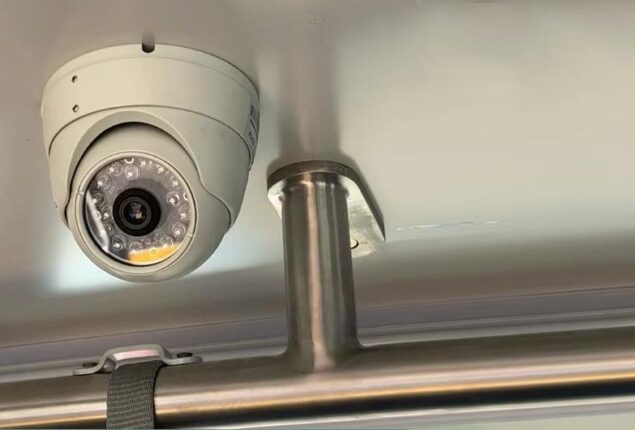Government announced link of RED bus cameras to the Integrated Teleprotection System with Artificial Intelligence (SITIA) to prevent crime and improve criminal prosecution

– The agreement signed between the Ministry of Transport and Telecommunications, the Undersecretary for Crime Prevention and the Carabineros de Chile will enable the speeding up of police operations associated with the search for vehicles with warrants for theft and other offenses.
Within the framework of inter-institutional efforts to strengthen the State’s capacities in prevention and security, the Executive announced on Tuesday the linking of the cameras installed in RED metropolitan transport buses to the Integrated System of Teleprotection with Artificial Intelligence (SITIA) led by the Undersecretariat for Crime Prevention, and to the Department for the Search and Seizure of Persons and Vehicles (SEBV) of the Chilean Police Force (Carabineros de Chile).
The milestone materialized with the signing of a collaboration agreement signed by the authorities, led by the Minister of the Interior and Public Safety, Álvaro Elizalde; the Minister of Transport and Telecommunications, Juan Carlos Muñoz; the Undersecretary of Crime Prevention, Carolina Leitao; the Undersecretary of Transport, Jorge Daza; the head of the Traffic, Highways and Road Safety Zone of Carabineros de Chile, General Víctor Vielma, and the Director of Metropolitan Public Transport, Paola Tapia.
Minister Elizalde explained that “this is part of the effort we are making as a government to incorporate new technologies and particularly artificial intelligence. There are many cameras available and installed in Santiago, both public and private. In fact, it is a fundamental tool for the investigation of crimes and has allowed us to have essential evidence to guarantee that whoever commits a crime is convicted”.
He added: “The challenge now is for all this information to be transmitted in real time and with artificial intelligence to be able to anticipate and significantly improve response times to better protect people. And in this way reduce, for example, crimes involving vehicles, vehicle theft or detection of license plates, which obviously allows us to have better tools for criminal prosecution”.
Meanwhile, the Minister of Transportation and Telecommunications, Juan Carlos Muñoz, indicated that “Having more than 2,300 buses transmitting live through its nearly 14,000 cameras allows us, at the driver’s request, to intervene directly in what is happening, because our buses are also geo-referenced. The information from these cameras will be available so that Carabineros can act quickly. This is an effort we are making at the Ministry of Transport and Telecommunications, a guideline we will continue to work on in order to provide ever greater security. This is in addition to other actions such as night stops, which allow buses to stop at night and drop off passengers at an intermediate point between stops, or the option of sharing the location during the trip, available in the RED application”.
Of the 5,000 buses equipped with cameras, 2,320 will transmit images in real time, allowing Carabineros to monitor possible incivilities and crimes on board the buses, while the Undersecretariat for Crime Prevention will have access to this data for the analysis and implementation of strategies to strengthen the safety of users.
For her part, the Undersecretary for Crime Prevention, Carolina Leitao, emphasized that these advances will make it possible to set a roadmap for new technological tests to improve security. “The signing of this agreement will allow us to initiate this collaborative work and the technological development of different initiatives, proofs of concept, in order to make their potential visible. Artificial intelligence is a fundamental issue because it allows us to process millions of data in a second and that is what we are finally looking for to improve prevention measures and response capacity”.
Finally, the head of the Traffic, Highways and Road Safety Zone of Carabineros de Chile, General Víctor Vielma, said that “this will make cameras and technology available for prevention, which will allow us to guide the services of our Carabineros, controlling incivilities and crimes that occur in the immediate environment. This coordination will allow us to have the records as evidence before the Public Prosecutor’s Office”.
Paola Tapia Salas, director of Metropolitan Public Transportation, added that “We are taking an important step in the security of metropolitan public transportation. We are expanding the territorial scope of the bus cameras that are connected online to our Bus Monitoring Center. This plan, which we presented in January with 1,600 buses, and in which the companies RBU, Metropol and STU participated, is being expanded today with 720 new buses, also incorporating the companies Subus and VOY. Now, with one out of every three buses transmitting live, we are practically in the entire territory of the 36 municipalities where the mobility network system operates today”.


